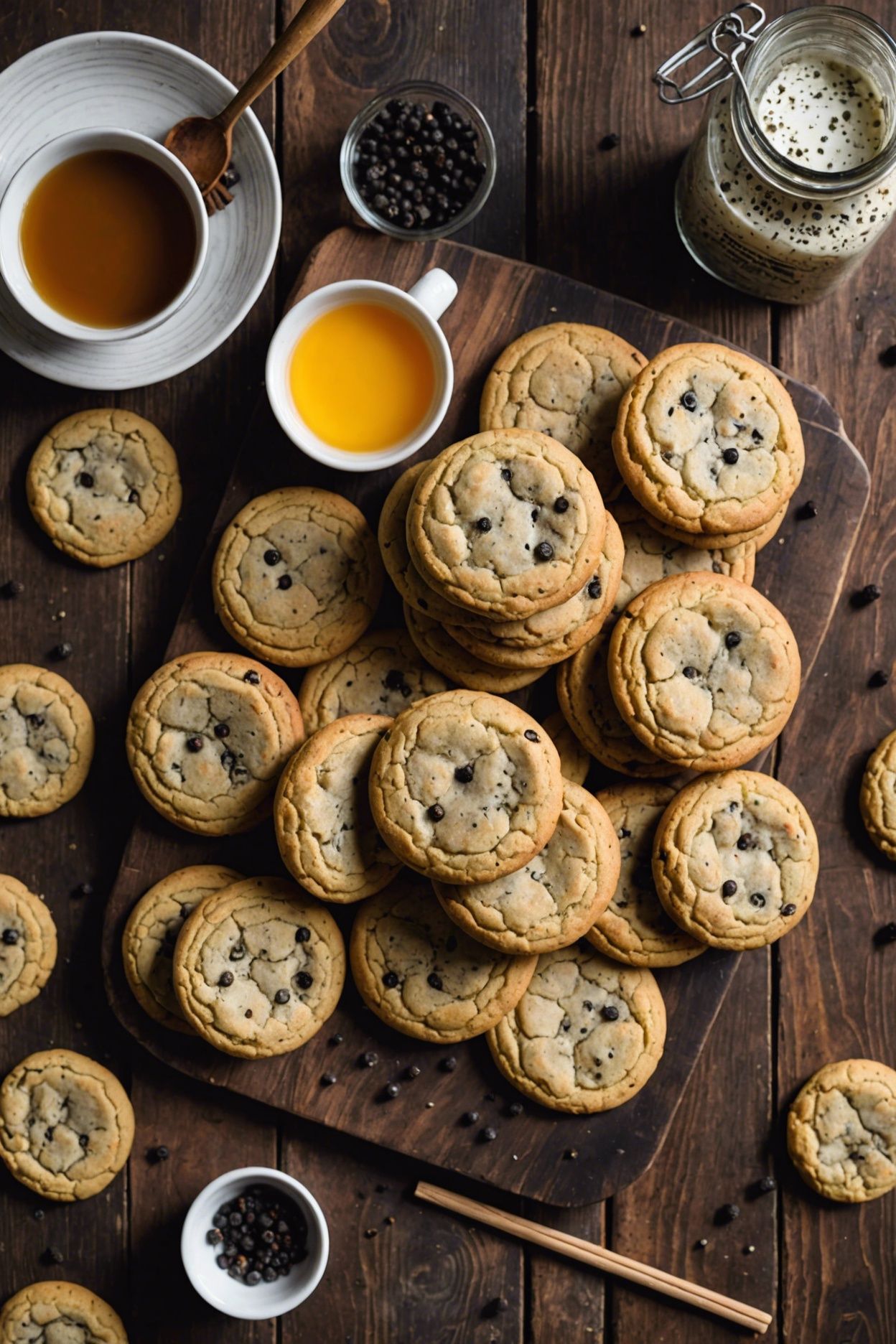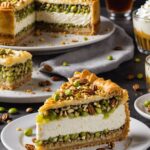The Best Fluffy Pancakes recipe you will fall in love with. Full of tips and tricks to help you make the best pancakes.
Spice up your cookie game with these uniquely flavored Black Pepper Cookies! The surprising kick of coarsely ground black pepper adds a fascinating dimension to the classic chewy cookie.
With a perfect balance of sweet and savory, these treats are sure to intrigue your taste buds and leave you wanting more.
Ready Time
50 mins
Yields
8 servings
Ingredients
- 2 1/4 cups all-purpose flour
- 1 teaspoon baking soda
- 1 teaspoon salt
- 1 cup unsalted butter, at room temperature
- 1/2 cup granulated sugar
- 1/4 cup packed dark brown sugar
- 2 large eggs
- 1 teaspoon pure vanilla extract
- 1 1/2 teaspoons coarsely ground black pepper
Instructions
Preheat your oven to 375°F (190°C). Line a baking sheet with parchment paper or a silicone mat.
Whisk together the flour, baking soda, and salt in a medium bowl.
Set aside. In a large bowl, use an electric mixer to cream together the butter and sugars until light and fluffy, about 2-3 minutes.
Beat in the eggs one at a time, making sure each is fully incorporated before adding the next.
Beat in the vanilla extract. Gradually mix in the flour mixture until just combined, being careful not to overmix.
Stir in the black pepper.
Scoop tablespoon-sized balls of dough onto the prepared baking sheet, leaving about 2 inches of space between each cookie. Bake for 12-14 minutes, or until the edges are lightly golden brown.
Remove from the oven and let cool on the baking sheet for 5 minutes before transferring to a wire rack to cool completely.
Serve warm and fresh – these cookies are best consumed within a day or two of baking!
Notes
Use high-quality, fresh ingredients for the best flavor. Don’t overmix the dough, as this can lead to tough cookies.
Use coarsely ground black pepper for the best flavor.
If you don’t have it, you can grind your own in a spice grinder or with a mortar and pestle. Make sure to use room temperature butter for a lighter, fluffier cookie.
Chill the dough for up to 2 hours if you want a crisper cookie.
Be gentle when transferring the cookies to the wire rack to avoid breaking. These cookies are perfect for dunking in milk or tea, so be prepared to get cozy!
Nutrional Value
- Calories: 220
- Total Fat: 12g
- Saturated Fat: 8g
- Cholesterol: 20mg
- Sodium: 250mg
- Total Carbohydrates: 27g
- Dietary Fiber: 1g
- Sugars: 12g
- Protein: 2g

Ask your question to our expert chef and get instant help.
Please provide details about your query with the recipe name.




